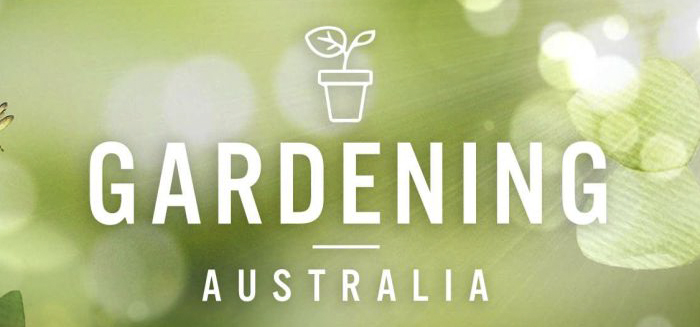Camellias make a fine addition to any garden, but there are a few simple rules to follow to ensure your camellias stay happy and healthy…

costa georgiadis
Gardening Australia
“Bill Parker knows camellias.”
Choosing the right camellia
With such a large range of camellias available, the task of choosing the right plant may be daunting for a newcomer. It helps to understand that all camellia varieties can be classified into one of five groups, six if you care to separate the higos from the japonicas. These are the species, and each has its own unique qualities and requirements.
The first aspect to take into consideration is the placement of your camellia. As a general rule most camellia species will prefer a semi-shade position rather than full sun, the exception however are sasanquas which are quite sun hardy. Be aware that hot, dry winds should always be avoided as should the morning sun in areas where frosts occur.
Consider also what purpose your camellia may be serving. The most popular of the species, japonicas, represent the widest range in flower form, colour and size. As a result they make excellent aesthetic specimens. Sasanquas can easily be transformed into outstanding hedges, espaliers, topiaries and groundcovers. Whilst hybrids offer a strong middle-ground, resilience and even fragrance!
Camellias are considered relatively slow growing, as a result all species will be quite happy in a pot or tub. If planted in the ground reticulatas tend to be the faster growers when young whilst some varieties of hybrids are very slow, only growing a matter of a few centimetres each year. Depending upon the variety, mature camellias ten years old or more can vary in size from a small shrub to a tree. Space requirements must always be considered before planting in the ground, this however can be managed with careful pruning.
Lastly decide on the colour and style of flower that suits your needs. Camellias are available in different hues and shades of red, pink, white and combinations of the three called variegations. The exception being the rarer yellow species of camellia ‘Nitidissima’. Finally, flower form or style and flower size. Flowers may vary in size from miniature, a cm or two, to very large, fifteen cm plus, depending on the variety. Camellia flowers grow in several different forms, some of these include- single form such as camellia sasanqua ‘Plantation Pink’, anemone form like camellia japonica ‘Elegans Splendor’ and formal double eg: camellia japonica ‘Margaret Hertrich’.
Planting camellias
Whether planting camellias in the garden or in pots the procedure is much the same, and relatively simple. The first step is to give the camellia a good water, this will lessen any shock to the plant and aid in removal from the pot or container it’s currently in. A few careful taps should see the camellia removed and ready for planting.
If planting in the ground dig a hole at least twice the width of the root ball and one and a half times as high. Backfill with a good quality potting mix, ensuring that the camellia is not planted too deep, this is very important as camellias are shallow rooted. Planting too deeply is a major cause of unhealthy plants, the top of the camellias root ball should be level with the ground, no deeper! Camellias-R-Us uses and recommends Martins ‘Camellia & Azalea Premium Potting Mix’. This potting mix contains the perfect blend of loam and humus at the ideal pH for camellias. In addition it contains a wetting agent that ensures the potting mix is easy to wet with repeated watering, thus reducing water loss and watering time. It also includes a controlled release fertiliser that will provide sufficient nutrients for up to six months.
Now that the plant is in the ground it’s important to lightly firm and compact the potting mix around the root ball, double checking at the same time you haven’t planted too deep. Ensure that any excess soil is free from the trunk of the plant. At this stage a good watering in is required, this will help both the potting mix and camellia to settle. Many people like to create a small well with any excess potting mix to trap water around the root ball and allow it to soak in more slowly and not run away. This is only necessary during the first few months of transplanting until the camellia has established itself. Staking is also often a good idea, especially in windy environments for the first year or so.
Maintaining your camellias
Camellias should be kept moist but never waterlogged! Over-watering can be just as harmful as under-watering so caution is always advised. The amount of water required is very much dependant upon your local weather conditions and so varies from region to region. If using Martins potting mix establish a regular watering program and water only when the mixture feels dry. Water well and water deeply during the summer months to help promote healthy new growth, remember- once a camellia has established itself they are quite drought hardy! Potted camellias will require less water than those in the garden, try to make certain potted plants aren’t left standing in a bowl of water.
Feeding is ideally done each spring, often just as the camellia has finished flowering and new growth has started to appear. Camellias-R-Us uses a specialised fertilizer, Click here to purchase! This is a controlled release fertilizer containing essential nutrients and trace elements ideal for camellias. The amount of fertilizer required will depend entirely upon the size and age of the camellia and/or the pot it’s in. Always follow the directions carefully and use the dosage rate recommended on the container. When feeding the fertiliser should be spread at the edge of the pot for potted plants and along the drip zone for plants in a garden, never place fertiliser near the trunk of the plant. Lastly remember it’s always better to under-feed than to over-feed! During summer an additional light coating of cow manure and mulch can also be applied at the base of camellias in a garden bed. This will help to keep the root system cool and prevent warm winds from drying out the soil. Never apply lime or mushroom compost!
Pruning your camellias is not something you should be scared of, in fact it can be a very rewarding experience and doing so can yield thicker, bushier and healthier plants. Sasanqua varieties will happily tolerate quite thorough pruning from a young age, for other species of camellias it’s recommended you hold off on pruning heavily until they reach roughly the height or shape you require, or the plant has matured. Pruning is best done at the end of winter, after the camellia has finished flowering and before new growth has begun to appear. If spring has arrived and your camellia is still flowering you may have to sacrifice some end of season blooms in preference for pruning before the new growth period begins.
Camellias are considered very pest and disease resistant, the majority of plants will never experience any problems with disease whatsoever, occasionally though pests may become a nuisance. The pests that most commonly affect camellias are the leaf suckers such as scale, aphids and mites which draw nutrients out of foliage, new growth and flower buds. Camellias-R-Us recommends the use of a good insecticide such as ‘Confidor’ from Bayer to put a swift end to any troublesome pests on your camellias. Please be sure to follow the directions on the bottle, including the safety directions, before spraying your plants. A stronger white oil based spray may be required for really bad scale or mite problems. Always remember to exercise caution before using any insecticides and be sure to identify the pest first before spraying.
Growing advice and cultural notes intended as a guide only.

